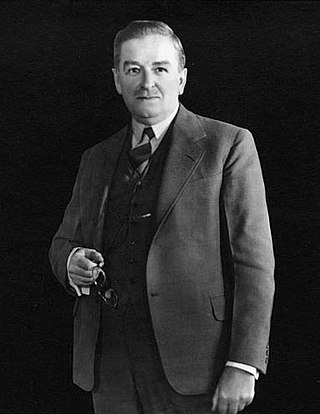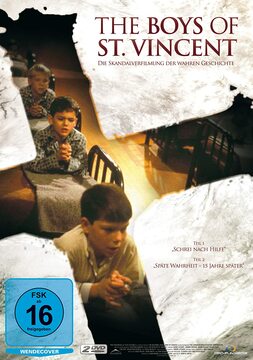Involuntary commitment, civil commitment, or involuntary hospitalization/hospitalisation is a legal process through which an individual who is deemed by a qualified person to have symptoms of severe mental disorder is detained in a psychiatric hospital (inpatient) where they can be treated involuntarily. This treatment may involve the administration of psychoactive drugs, including involuntary administration. In many jurisdictions, people diagnosed with mental health disorders can also be forced to undergo treatment while in the community; this is sometimes referred to as outpatient commitment and shares legal processes with commitment.

Maurice Le Noblet Duplessis,, byname "Le Chef", was a Canadian lawyer and politician who served as the 16th premier of Quebec. A conservative, nationalist, populist, anti-communist, anti-unionist and fervent Catholic, Duplessis and his party, the Union Nationale, dominated provincial politics from the 1930s to the 1950s. With a total of 18 years and 82 days in office, he remains the longest-serving premier in Quebec history.
The Quiet Revolution refers to a significant period of socio-political and socio-cultural transformation in French Canada, particularly in Quebec, following the election of 1960. This period was marked by the secularization of the government, the establishment of a state-administered welfare state known as the état-providence, a shift in political alignment toward federalist and sovereigntist factions, and the eventual election of a pro-sovereignty provincial government in the 1976 election. While the Quiet Revolution is often associated with the efforts of the Liberal Party of Quebec's government led by Jean Lesage and, to some extent, Robert Bourassa, its profound impact has influenced the policies of most provincial governments since the early 1960s.

Laval is a city in Quebec, Canada. It is in the southwest of the province, north of Montreal. It is the largest suburb of Montreal, the third-largest city in the province after Montreal and Quebec City, and the thirteenth largest city in Canada, with a population of 443,192 in 2021.
The politics of Quebec are centred on a provincial government resembling that of the other Canadian provinces, namely a constitutional monarchy and parliamentary democracy. The capital of Quebec is Quebec City, where the Lieutenant Governor, Premier, the legislature, and cabinet reside.

Quebec nationalism or Québécois nationalism is a feeling and a political doctrine that prioritizes cultural belonging to, the defence of the interests of, and the recognition of the political legitimacy of the Québécois nation, particularly its French Canadian population. It has been a movement and a central issue in Quebec politics since the beginning of the 19th century. Québécois nationalism has seen several political, ideological and partisan variations and incarnations over the years.

An orphanage is a residential institution, total institution or group home, devoted to the care of orphans and children who, for various reasons, cannot be cared for by their biological families. The parents may be deceased, absent, or abusive. There may be substance abuse or mental illness in the biological home, or the parent may simply be unwilling to care for the child. The legal responsibility for the support of abandoned children differs from country to country, and within countries. Government-run orphanages have been phased out in most developed countries during the latter half of the 20th century but continue to operate in many other regions internationally. It is now generally accepted that orphanages are detrimental to the emotional wellbeing of children, and government support goes instead towards supporting the family unit.

Quebec was first called Canada between 1534 and 1763. It was the most developed colony of New France as well as New France's centre, responsible for a variety of dependencies. Common themes in Quebec's early history as Canada include the fur trade — because it was the main industry — as well as the exploration of North America, war against the English, and alliances or war with Native American groups.

This section of the Timeline of Quebec history concerns the events relating to the province of Quebec, Canada between the Westminster statute and the "Quiet Revolution."
The 1960 Quebec general election was held on June 22, 1960, to elect members of the Legislative Assembly of Quebec, Canada. It was one of the most significant elections in Quebec history, rivalled perhaps only by the 1976 general election. The incumbent Union Nationale, led by Antonio Barrette, was defeated by the Quebec Liberal Party, led by Jean Lesage.
The Action libérale nationale (ALN)('National Liberal Action') was a short-lived provincial political party in Quebec, Canada. It was founded during the Great Depression and led by Paul Gouin. The ALN played an important role in the foundation of the Union Nationale.
The Conservative Party of Quebec was a political party in Quebec, Canada, from 1867 until 1936, when it merged with members of the Action libérale nationale to form the Union Nationale.

The Sisters of Providence are a religious institute of Roman Catholic sisters founded in 1843 by Émilie Gamelin. They are headquartered in Montreal, Quebec with five provinces: Mother Joseph Province, Holy Angels Province, Philippines Vice-Province, Émilie-Gamelin Province and Bernard Morin Province.

The Boys of St. Vincent is a 1992 Canadian television miniseries directed by John N. Smith for the National Film Board of Canada. It is a two-part docudrama inspired by real events that took place at the Mount Cashel Orphanage in St. John's, Newfoundland, one of a number of child sexual abuse scandals in the Roman Catholic Church.

The Mount Cashel Orphanage, known locally as the Mount Cashel Boys' Home, was a boys' orphanage located in St. John's, Newfoundland and Labrador, Canada. The orphanage was operated by the Congregation of Christian Brothers, and became infamous for a sexual abuse scandal and cover-up by the Royal Newfoundland Constabulary and NL justice officials.
Political abuse of psychiatry, also known as punitive psychiatry, refers to the misuse of psychiatric diagnosis, detention, and treatment to suppress individual or group human rights in society. This abuse involves the deliberate psychiatric diagnosis of individuals who require neither psychiatric restraint nor treatment, often for political purposes.
Léo-Paul Lauzon is an author, researcher, accountant, professor, and social activist in Quebec. He is best known for his work in seeking corporate social accountability.
Catholic sisters and nuns in Canada have been an important presence since the 17th century.

Maurice Duplessis was Premier of Quebec, Canada, from 1936 to 1939 and again from 1944 to 1959 as leader of the Union Nationale (UN) caucus in the Legislative Assembly of Quebec, the lower house of the Quebec Legislature. The first term of the longest-serving premier of the province since Confederation lasted three years (1936–1939) and was interrupted when he lost a snap election in 1939. He returned to power in 1944 and ruled the province uninterruptedly until his death in September 1959, maintaining majorities in three following elections. The premier's death threw the Union Nationale into disarray. The next year, the party lost power to the Liberals under Jean Lesage, who reversed a lot of Duplessis's policies and radically changed Quebec's politics by leading the province through the Quiet Revolution.
On February 8, 2023, a bus driver crashed a Société de transport de Laval (STL) bus into a daycare in the Sainte-Rose district of Laval, Quebec, Canada, killing two children and hospitalizing six others. The driver exited the bus immediately after the crash, screaming hysterically and tearing off his clothes. He was immediately subdued by parents and residents and arrested by police minutes after the crash.









